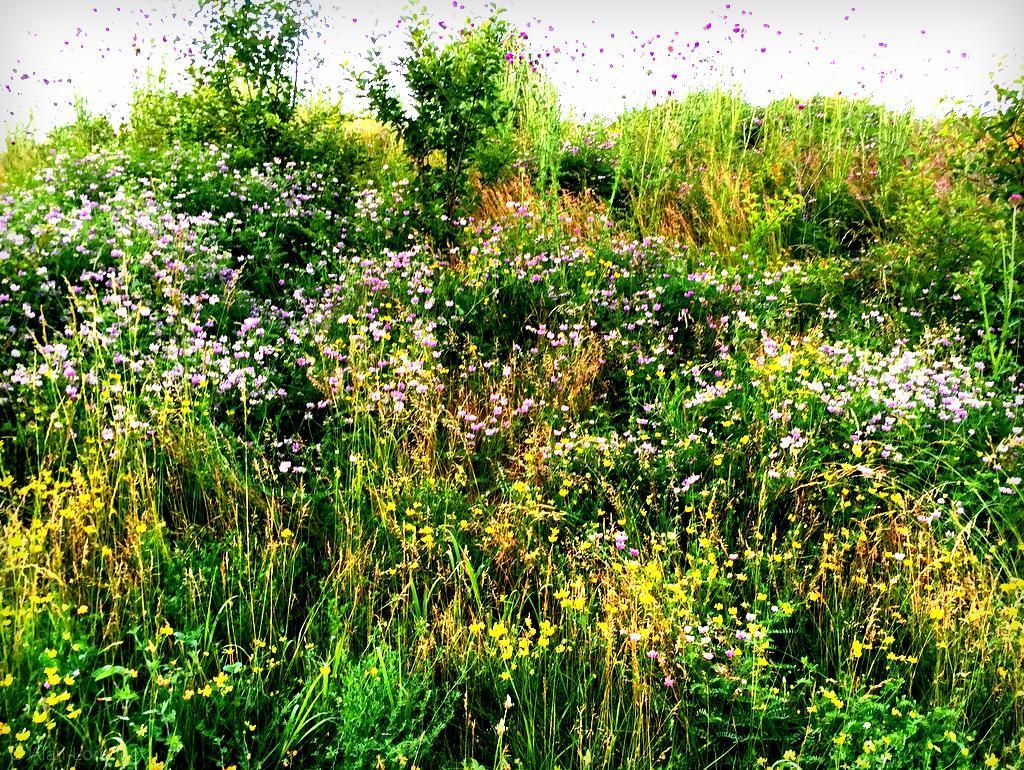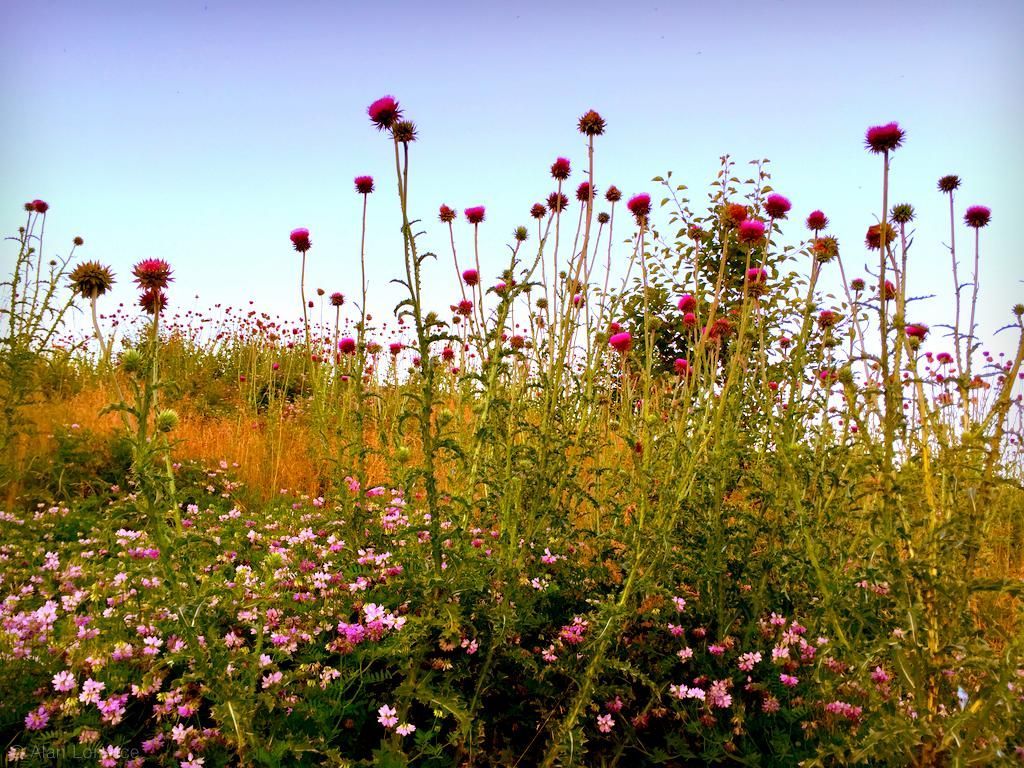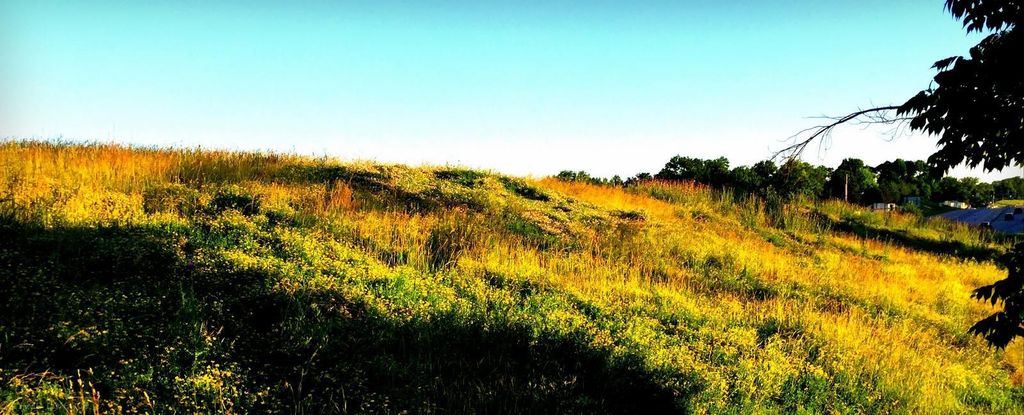A month ago on a morning walk to the nearby supermarket I noticed that the wild hill next to the highway -- where I've released many a captured mouse and mole -- looked quite beautiful. Great texture and color as there were large swathes of blooms. So nice!
I only had my phone with me but snapped some photos anyway. Needless to say that the images captured did not impress me, and I left them to be forgotten. Today though I took another look, processed the heck out of them to try and restore some of the "magic" that I saw that morning, and am now sharing with you.
I'd have to go back over very old photos to verify, but if I remember correctly this hill is purely a remnant of the highway construction, the soil a very gravelly mix (I've tried digging holes in it before).
Everything growing here is a volunteer. (The things I've planted don't seem to have survived.)
It can be quite pretty at times.
Are any of these plants natives, or even desirable?
I should probably get out there and remove some thistles before they all go to seed, as a few thistles are nice but we don't want them taking over.
Why don't I plant some Asclepias syriaca (common milkweed) out there where it has room to spread and is easily seen by any migrating monarchs?
I'm glad I gave these photos a second chance!
.








Milkweed plants would be a GREAT idea here!
ReplyDeleteLooks good that it almost looks like it's been deliberately planted that way!
ReplyDeleteI like it when nature seems to take back developed areas! In the city, the street department works with Operation Brightside to plant wildflowers along the highway. They plant a lot of red clover and bachelor buttons and then let them go to seed before mowing. Have you ever seen the daffodils they plant in big patterns? It's a welcome sign of spring!
ReplyDeleteI think I've identified the yellow flowered plant: bird's foot trefoil, Lotus corniculatus. Can anybody verify?
ReplyDelete